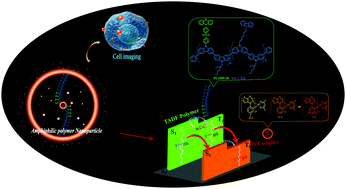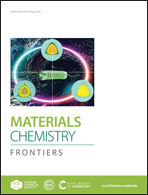Highly emissive phosphorescence nanoparticles sensitized by a TADF polymer for time-resolved luminescence imaging†
Abstract
The development of luminescent probes with long excited state lifetimes is essential for time-resolved biological imaging, among which Ir(III) complexes are particularly promising. Considearble efforts have been devoted to increasing the luminescence efficiency of a bioprobe based on the Ir(III) complex in water. A novel and facile design principle of nanoparticles with highly emissive phosphorescence sensitized by a thermally activated delayed fluorescence (TADF) polymer for bioimaging has been proposed in this study. The homogenous doping of a small amount of the Ir(III) complex with the TADF polymer (2.5% doping ratio) via non-covalent assembly in nanoparticles induced an efficient energy transfer from the TADF polymer to the Ir(III) complex, thus enhancing both emission intensity and luminescence lifetime. In addition, these nanoparticles, which were used in time-resolved luminescence bioimaging, exhibited good dispersibility in water and excellent biocompatibility. Therefore, this method significantly reduced the concentration of the Ir(III) complexes and decreased the toxicity risk of heavy metals.



 Please wait while we load your content...
Please wait while we load your content...